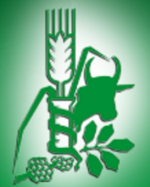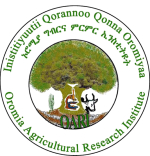CGIAR Research Program on Dryland Systems - DS
Overview: ESA-AS003 - Marsabit-Yabello-East Shewa Transect (Kenya and Ethiopia)
Leader Karuturi Rao, International Crops Research Institute for the Semi-Arid Tropics - ICRISAT
Coleader: Karuturi Rao, International Crops Research Institute for the Semi-Arid Tropics - ICRISAT
Team
members: 15
Partner
organizations: 10
Budget 2025
USD :
0
Activities/Products: 8
Description
In order to implement integrated systems approach, there is a need to identify common action sites where ALL team members will implement joint activities. Five key considerations were made when selecting common sites: 1) there was need to choose one site from SRT2 and one site in SRT3; 2) a transect in south-north direction that covers the diverse variability in biophysical and livelihood systems should be established 3) need to select a cross border site within the transect; 4) select areas where most centers have been working before to optimize resource use and data availability and 5) align the selection of sites to administrative units.
Based on these criteria a transect from Marsabit-Yabello-East Shewa was selected and covers 2 systems – livestock dominated system (Marsabit-Yabello) and crop livestock system (East Shewa).
Livestock dominated System: The primary production system in SRT2 is extensive livestock production. The total area of the region is 530,000 km2. Over 90% of the area is classified as “semi-arid and arid livestock only” production systems. A large portion of areas (82%) of the area receives less than 600 mm rainfall annually. The rainfall is bimodal, with the short rains falling from October to December and the long rains from March to May. The coefficient of variability high across the area, meaning crop production is extremely risky. The area’s livestock systems produce a mixture of sheep, goats, cows and camels. Livestock production is a significant part of the region's economy. The area is subject to frequent drought and food security is significantly affected. The impact of droughts on assets, income and food security is significant, as livestock losses are heavy in droughts that last more than one season. More frequent droughts also mean that herds do not have time to recover between droughts. In Kenya as a whole about 70% of all livestock are produce in the arid and semi-arid areas. In Ethiopia, the livestock sector that largely originates from arid and semi-arid lands contributes 12-16% to Ethiopia GDP and 30-35% of the agricultural GDP. The Borana rangelands are located in southern Ethiopia and occupy are of about 95,000 km2 of land area and it as home to about 350,000 people and one million head of cattle, small ruminants, and camels. The semi-arid rangeland annual rainfall ranges from low rainfall of 300 to 900 mm, with high spatial and temporal variability. Borana are the main ethnical group who depend on extensive livestock production – predominately keeping cattle and small numbers of small ruminants, camels and donkeys.
Crop livestock system: East Shewa zone extends between 7033’50”N - 9008’56”N and from 38024’10”E - 400 05’ 34”E and comprises of 10 districts (Fantalle, Boset, Adama, Lume, Bora, Dugda, AdamiTulluJidoKombolcha, Ada’a, Liben and Gimbichu). The total area of East Shewa zone is approximately 10,241 Km2 with a population density of 120 per km2. According to national population and housing census 2007, total population of East Shewa was 1.16 million, of which 0.56 million are women. The population is projected to increase by 27% to reach 1.5 million by 2023.
The East Shewa Zone falls under the Rift Valley Maize and Haricot Beans (RVM) Livelihood zone. Of the many agro-ecological Zones present, Tepid sub-moist mid highlands (32.36), Tepid sub-humid mid highlands (23.04%), warm sub-moist lowlands (18.49%) and warm sub-moist lowlands (9.36%) account for 83.3% of the total area. Average annual rainfall varies from 500 mm to 900 mm, with some pockets receiving as high as 1400mm. Rainfall is bimodal with a short rainy season during February-April, followed by long rainy season from June to September.
Average size of the land holding was estimated to be 2.75 ha. With more than 62% of the land area under cultivation, crop agriculture constitutes the main economic activity followed by livestock. The main crops grown are maize, wheat, teff, barley, haricot beans and other pulse crops are the main enterprises. Farmers also grow cash crops like onion, tomato and other vegetables and fruit crops over small areas. In general, yields achieved by farmers are not low but there is a scope for further intensification. Most farmers use fertilizers (DAP and urea) which are mostly purchased in cash or on credit from Government or from cooperatives. About 47,000 ha is under irrigation using water sourced from rivers, lakes and underground water. The livestock population was estimated to be 1.69 million made up of cattle 505 thousands; goat 319 thousands; sheep and 871 thousands chicken.
Most parts of the East Shewa zone has good access to market. Due to the geographical proximity of the zone to Addis Ababa, it has a great advantage for market access for both agricultural and industrial products. The road access in the zone is good and includes many large trading centers that include Shashemene, Aje, Ziway, Meki and Adama. This provides a good opportunity for further intensification.
A number of centres are working in Yabello (Borana), ILRI and ICRAF (Carbon project and governance), CCAF (climate change), ILRI (livestock insurance).
The institutions working in East Shewa include ICRISAT (Africa raising and some components of HOPE project on dryland cereals and TLII project of grain legumes), ICRAF (large DGIS upscaling project on sustainable intensification), ICARDA (Seed systems and small ruminants), ILRI (Lives project). Additional contributions are received form CIAT on bean technologies.
Atlas
Activities/Products
Projects
| Acronym | Project Title | Year | Section | Leader | Center | Budget | Start Date | End Date | View |
|---|
Outcomes and Impact
| Code | Outcomes and Impact | Type | Indicators | View | |
|---|---|---|---|---|---|
| 1 | System approach is adopted by stakeholders | development outcome | 3 | ||
| 2 | Female and male farmers/shakeholders use/adopt/implement methods/tools/approaches/technologies/NRMpractices/Varieties/framework/concepts | research outcome | 5 | ||
| 3 | Female and male farmers/stakeholders (inc.youth) awareness, skills and knowledge increased | research outcome | 2 | ||
| 4 | Rules and regulations developed/implemented at community level | research outcome | 1 | ||
| 5 | Crop yields increased | research outcome | 0 | ||
| 6 | Livestock productivity increased | research outcome | 0 | ||
| 7 | Multi-stakeholder partnerships and interactive learning increased | research outcome | 1 | ||
| 8 | Agroforestry practices adopted/incresed | research outcome | 1 | ||
| 9 | Tools, methods, processes and capacity of stakeholders to create/customize resilience options improved | research outcome | 1 |
Personnel Involved
Partners















